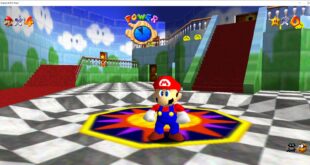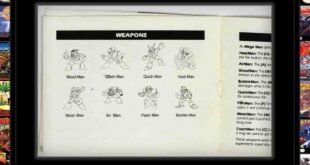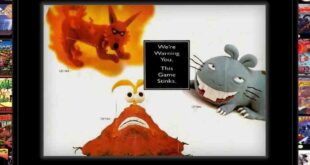A Feature Masquerading as a Flaw
Since its release in 2017, the Nintendo Switch has been celebrated as one of the most successful consoles of all time. It blended handheld convenience with home-console performance, revitalized franchises like Zelda and Mario, and sold over 140 million units. But along with this success came something else: the infamous Joy-Con drift.
What began as a flood of user complaints, characters walking off cliffs without input, cursors sliding across menus, Smash fighters suiciding at random… has now been reframed by Nintendo as a deliberate design decision. Rather than admit to a widespread hardware defect, executives have leaned into the narrative that drift is part of the experience.
“We don’t see drift as an error,” explained Junpei Takahashi, Nintendo’s Executive of Controller Innovation, in a recent interview. “We see it as immersive unpredictability. Real life isn’t always precise, so why should gaming be? The joystick is simply reminding players of their humanity.”
In other words, your controller isn’t broken, it’s just ahead of its time.
Customer Frustration Meets Corporate Philosophy
Gamers have long been divided in their reactions. Some report frustration so intense they’ve abandoned their consoles altogether. Others, however, have found ways to rationalize the chaos.
“I tried to play Animal Crossing,” said longtime fan Ashley Martin. “I just wanted to water my flowers. Instead, my villager sprinted into the river and drowned. Nintendo support told me it was part of the narrative arc. I didn’t realize drowning was in the game, but apparently now it is.”
Competitive players have had even sharper reactions. “I was about to win a $5,000 Smash Bros. tournament,” said esports competitor Miguel Rojas, “and then my Joy-Con drifted me straight into Captain Falcon’s knee. I lost everything. Nintendo called to congratulate me on embracing unpredictability.”
Yet some players defend the experience, citing its capacity to keep games fresh. “I’ve beaten Breath of the Wild six times,” streamer PeachPlz explained, “but thanks to drift, every playthrough feels brand new. Sometimes Link fights monsters. Sometimes he just spins in circles for twenty minutes. That’s art.”
The Lawsuits, Reimagined
Joy-Con drift has led to lawsuits in the United States, Canada, and across Europe. Consumer protection agencies have accused Nintendo of knowingly selling defective hardware. In France, the case made national news. In the U.S., class action lawsuits have been filed repeatedly.
Nintendo’s response has been unusual. Rather than deny the claims, the company has argued that customers are suing them not for defects, but for providing too much realism.
“Life drifts,” explained legal counsel Rika Honda during a court appearance. “Your car pulls slightly to the left. Your dog runs away when you call it. Your hand shakes when you’re nervous. Joy-Con drift simply mirrors these realities. If anything, we should be congratulated for offering such authenticity.”
Judges, so far, remain unconvinced. But Nintendo continues to fight, armed with the confidence that no lawsuit has yet stopped gamers from buying replacement controllers.
Replacement Joy-Cons: A Subscription in Disguise
The heart of Nintendo’s strategy lies not in repair, but in repetition. Replacement Joy-Cons retail for $79.99 a pair. Sales of replacements now represent a significant revenue stream for the company.
One analyst described the strategy bluntly: “Joy-Con drift isn’t a bug. It’s a business model. By ensuring that every controller eventually fails, Nintendo has created a recurring revenue stream disguised as an accident.”
Players agree, albeit with less enthusiasm. “I’ve bought six sets of Joy-Cons since 2018,” said gamer Brandon Lee. “Every time I swear I won’t do it again. And every time, two weeks later, I cave. I think I need help. Nintendo thinks I need more controllers.”
According to leaked internal slides, Nintendo internally refers to this model as “planned unpredictability.” One slide reads: The player never knows when the drift will arrive, but we know when the cash will.
Comparisons to Other Industries
While it may seem outrageous, Nintendo is not alone in normalizing flaws. Apple popularized the idea of selling devices with non-replaceable batteries that degrade within a few years. Printer companies sell ink cartridges at luxury prices, sometimes more expensive than the printer itself.
Nintendo, however, has gone further by celebrating the defect as an asset. As one gaming journalist noted, “Apple hides its flaws. Nintendo sells them as features. That’s the difference between shame and genius.”
Gamers Adjust Expectations
Over time, gamers have begun to adapt. Speedrunners now incorporate drift into their strategies, creating new categories such as “Any Drift%” where random joystick movements are embraced as part of the challenge. Some fans create TikToks showcasing drift as performance art, treating their characters’ involuntary motions as interpretive dance.
“I don’t even fight it anymore,” explained one user. “If my Joy-Con wants Mario to jump into lava, who am I to argue? Clearly, Nintendo knows best.”
Communities have sprung up around “drift therapy,” where players gather online to share stories of lost matches, ruined save files, and the existential acceptance that comes with surrendering control.
Corporate Justification
Asked whether Joy-Con drift would be addressed in the upcoming Switch 2, Nintendo executives were unequivocal.
“Fix it? Why would we fix it?” said Senior Hardware Designer Kaori Nakajima. “Predictability is boring. Precision is for spreadsheets. We make video games. Chaos is fun.”
CEO Shuntaro Furukawa was more direct during a recent investor call: “We could create controllers that last forever. But would that be profitable? No. Would that be Nintendo? Absolutely not. Our philosophy is simple: break, replace, repeat.”
Investors applauded the statement, with shares rising 3% on the announcement that Switch 2 controllers would “drift faster, but more elegantly.”
Conclusion
In the end, Joy-Con drift may be less of a technical failure and more of a corporate philosophy: sell unpredictability, sell replacements, sell the illusion that it was intentional all along.
Other companies release patches to fix mistakes. Nintendo releases press statements to rebrand them as innovation. The result is a controller that frustrates millions, enriches billions, and reminds players who’s really in control.
As one anonymous Nintendo spokesperson reportedly put it: “When your character won’t stop moving, that’s not your fault. That’s Nintendo reminding you that you’re not the player. You’re the customer.”
This article is satire. Do not kill me. For more satire, check out the kings… Lampoon Tribune.
 Retro-Replay.com Retro gaming reviews, news, emulation, geek stuff and more!
Retro-Replay.com Retro gaming reviews, news, emulation, geek stuff and more!




